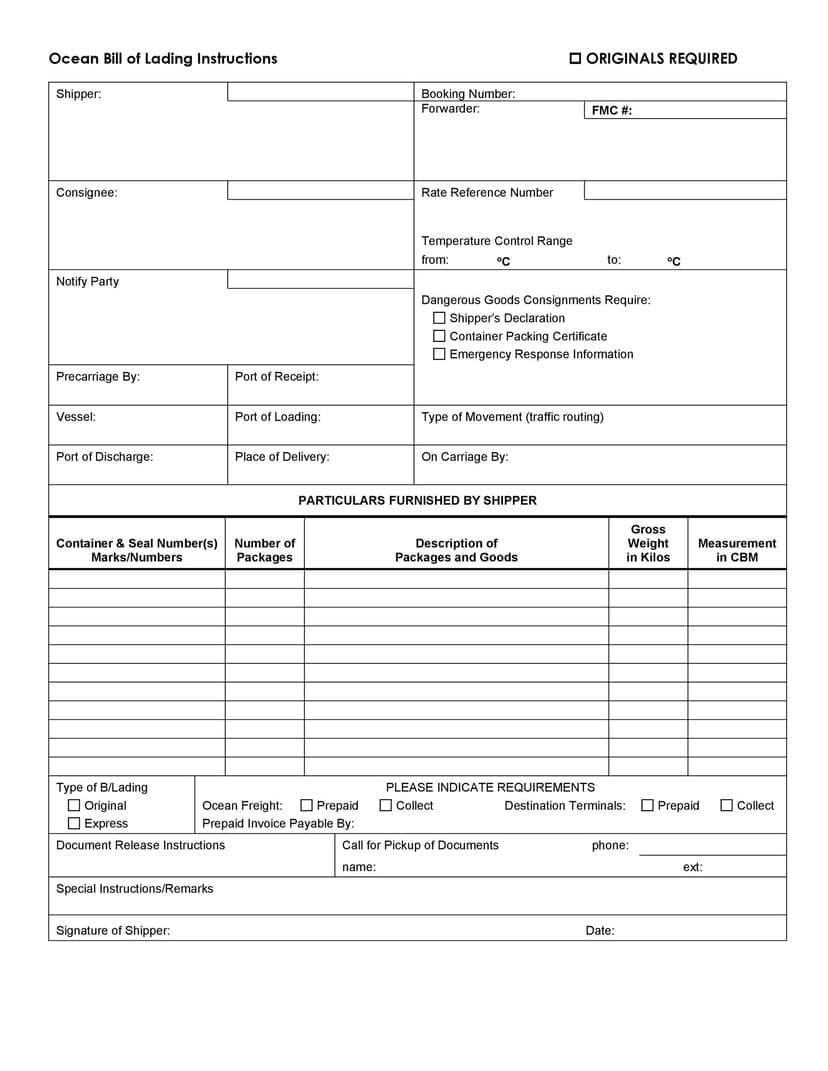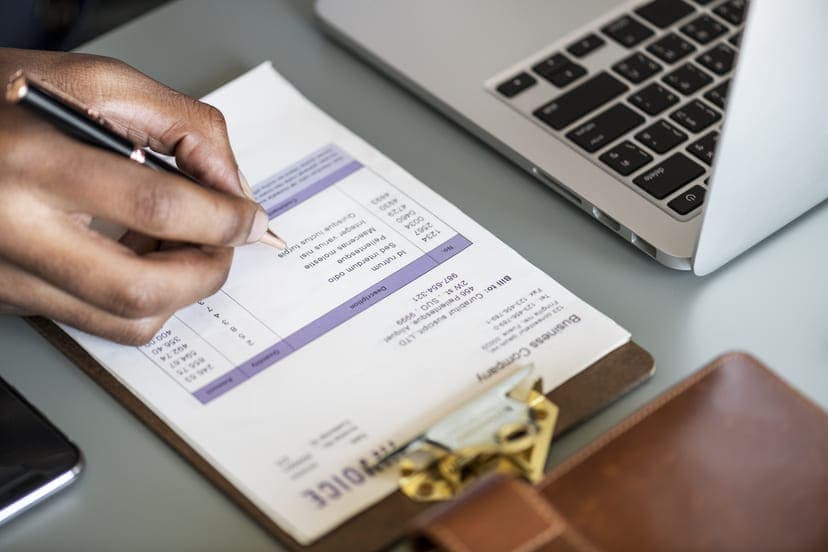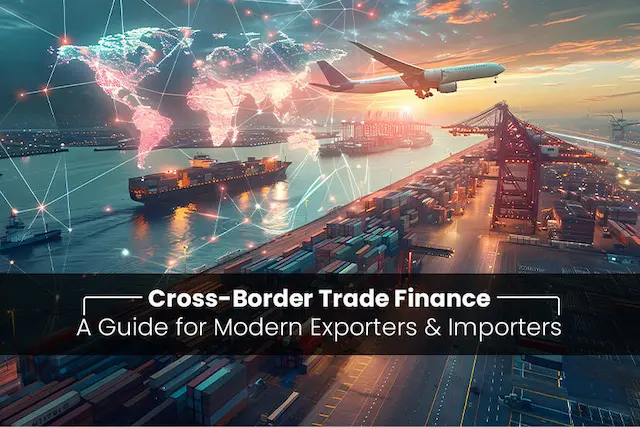Imagine sending a package to a friend far away. You’d need a receipt to prove that you sent it, right? In international trade, when goods are shipped across the ocean, there’s a special receipt called an “Ocean Bill of Lading.”
This guide will explain what it is, why it’s important, what information it contains, and even provide an example to make it all clear.
Whether you’re a seasoned pro in global trade or just starting, understanding this document is key to smooth international shipping. Let’s dive into the Ocean Bill of Lading and make it easy to grasp.
Also Read: Bill of Lading: Meaning, Types, Example, and Purpose
Key Takeaways
- An Ocean Bill of Lading is a crucial document in international shipping, serving as a receipt, contract, and proof of ownership for goods transported by sea.
- It contains essential information about the shipper, consignee, goods, ports, freight charges, and more, making it vital for customs clearance and dispute resolution.
- Terms and conditions in the Ocean Bill of Lading vary but typically cover description of goods, shipment details, responsibilities, and liability.
Different types of Ocean Bills of Lading, such as straight, order, clean, claused, through, and multimodal, serve distinct purposes. - Ocean Bill of Lading tracking allows real-time monitoring of shipments using booking, B/L, or container numbers through standard or GPS tracking systems.
What is Ocean Bill of Lading?
An Ocean Bill of Lading is a crucial document used in international shipping and trade. It serves as a receipt for goods shipped via sea, a contract between the shipper and the carrier (often a shipping company or vessel operator), and a document of title, which means it represents ownership of the goods.
Here’s a breakdown of its key purposes:
Receipt: It acknowledges that the goods have been received by the carrier for shipping.
Contract: It outlines the terms and conditions of the transportation agreement between the shipper and the carrier, including the agreed-upon freight charges, shipping details, and responsibilities of each party.
Document of Title: It acts as evidence of ownership of the goods. Whoever holds the original, properly endorsed Bill of Lading has the right to claim the goods upon arrival at the destination port.
The Ocean Bill of Lading contains vital information, including details about the shipper, consignee (receiver), description of the goods, their quantity, and destination. It’s a critical document for clearing customs, obtaining the goods at the destination, and resolving any disputes in the shipping process.
In simple terms, it’s like a combination of a receipt, a contract, and a key to unlocking your shipped goods.
What are the Terms and Conditions of Ocean Bill of Lading?
The terms and conditions of an Ocean Bill of Lading can vary depending on the specific agreement between the shipper and the carrier, as well as international trade rules. However, here are some common terms and conditions you might find in an Ocean Bill of Lading:
Description of Goods: This section provides details about the shipped goods, including their nature, quantity, weight, and any specific markings or numbers. It’s important for customs clearance and to ensure that the right goods are delivered.
Shipment Information: This includes the name and address of the shipper (the person or company sending the goods) and the consignee (the person or company receiving the goods).
Loading and Unloading Ports: The Bill of Lading specifies the ports of loading (where the goods were loaded onto the ship) and the port of discharge (the destination port). It’s crucial for routing the cargo.
Vessel Information: It includes details about the vessel, such as its name, voyage number, and the date of departure.
Freight Charges: This section outlines the agreed-upon freight charges, which can be prepaid or payable at the destination. It also specifies the currency in which the charges should be paid.
Responsibilities and Liabilities: The Bill of Lading often includes clauses that outline the responsibilities and liabilities of both the shipper and the carrier. This can cover issues like cargo damage, delays, or loss.
Notation and Remarks: Any special instructions or notations related to the shipment may be included here.
Terms and Conditions: This section contains specific terms and conditions that govern the entire transportation process. It can cover issues such as the carrier’s liability, dispute resolution, and the applicable law.
Documentary Instructions: If the Bill of Lading is negotiable, it may contain instructions on how it should be transferred to claim the goods at the destination.
Signature and Date: The document is typically signed by the shipper, the carrier, or their agents, and it includes the date of issuance.
It’s essential to carefully review the terms and conditions in the Ocean Bill of Lading, as they can have a significant impact on the shipping process and the responsibilities of the parties involved.
Additionally, international trade often follows established conventions and regulations, such as those set by the International Chamber of Commerce (ICC) or specific trade terms like Incoterms, which can influence the content of the Bill of Lading.
When is the Ocean Bill of Lading Issued?
The Ocean Bill of Lading is given to you when your goods are loaded onto the ship, and all the necessary customs paperwork is done.
Different Types Of Ocean Bill of Lading
There are several types of Ocean Bills of Lading used in international shipping, each serving different purposes. These types help in managing and tracking goods during their journey and can have different legal implications. The main types include:
Straight Bill of Lading: This is a non-negotiable BOL, typically used when the shipper has already received payment or when the shipment is for a specific consignee.
Order Bill of Lading: This BOL is negotiable and can be transferred to another party. It’s often used in trade where the buyer may change during transit.
Clean Bill of Lading: It indicates that the goods have been received in proper condition and without damage or discrepancies.
Claused Bill of Lading: This BOL notes discrepancies or damage to the goods. It’s also called a “foul BOL.”
Through Bill of Lading: Used when a shipment involves multiple modes of transportation, such as a combination of sea and land transport.
Multimodal or Combined Transport Bill of Lading: Used for intermodal transportation, covering various modes like sea, land, and air.
Ocean Bill of Lading Tracking: How to Monitor Your Shipment
Ocean Bill of Lading (BOL) tracking is like checking where your package is during its journey on a ship. You can do this on the shipping company’s website. Some companies even give you real-time updates, which means you can see exactly where your package is at any moment. To check your package’s status, you usually need to enter a booking number, bill of lading number, or container number.
There are two main types of tracking systems. The first one, called Standard Container Tracking, keeps a record of the container’s movements as it passes through different ports. The second one, called GPS Container Tracking, shows you the container’s exact location in real-time. It uses a special device with a battery attached to the container, which tells you the time, temperature, speed, location, and more.
Also Read: Exploring the Diverse Types of Bill of Lading in Shipping
Template of Ocean Bill Of Lading
An Ocean Bill Of Lading contains information about:
Exporter’s details
- Booking number
- Document number
- Export references
- Ultimate consignee
- Forwarding agent
- Notify party
- Pre-carriage details
- Place of receipt
- Domestic routing
- Exporting carrier
- Port of loading
- Loading pier/terminal
- Port of discharge
- Place of receipt on the carrier
- Type of move
- Quantity of articles
- Description of goods
- Weight and measurements of the articles
- Ship reference number
- Freight rates and charges
- Carrier information
- Bill of Lading (B/L) number
- Declaration that the carrier has received the goods and will have legal possession until they reach their destination and all relevant procedures are completed.

Difference Between Ocean, Sea Waybill, and Memo Bill of Lading
Ocean Bill of Lading, Sea Waybill, and Memo Bill of Lading are three distinct documents used in shipping and logistics. Here’s a comparison of their key differences:
Ocean Bill of Lading (Ocean B/L)
Nature: A legal document issued by the carrier (shipping line) to acknowledge the receipt of goods and to set terms and conditions for their carriage.
Negotiability: Can be negotiable or non-negotiable. Negotiable B/L allows the transfer of ownership of the goods by endorsing the document.
Title to Goods: May represent the title to the goods (negotiable B/L) and is used in international trade to claim goods from the carrier upon arrival at the destination.
Usage: Commonly used in international trade, especially for shipments involving multiple carriers, and provides security to both the shipper and the consignee.
Sea Waybill
Nature: A non-negotiable transport document issued by the carrier to acknowledge the receipt of goods and outline the terms of carriage.
Negotiability: Non-negotiable. It does not confer ownership of the goods or the right to claim them.
Title to Goods: Does not represent the title to the goods and does not need to be presented to claim the goods upon arrival.
Usage: Ideal for straightforward point-to-point shipments, as it simplifies the process by eliminating the need for the consignee to present a physical document for cargo release.
Memo Bill of Lading (Memorandum Bill of Lading)
Nature: A document issued by an intermediary, such as a freight forwarder, to the shipper to acknowledge the receipt of goods for shipment.
Negotiability: Typically non-negotiable, as it’s not issued by the carrier but by a third party.
Title to Goods: Does not represent the title to the goods and is not usually used to claim goods from the carrier.
Usage: Often used in situations where the intermediary (freight forwarder) consolidates shipments from multiple shippers into a single shipment. It is primarily an internal document to track and manage the cargo.
Final Words
Understanding the Ocean Bill of Lading is like having a clear roadmap for your international shipments. It’s your receipt, your contract, and the key to your shipped goods. By grasping its significance, terms, and various types, you can navigate global trade with confidence.
Whether it’s the Ocean Bill of Lading, Sea Waybill, or Memo Bill of Lading, each serves a unique purpose in the world of shipping and logistics. So, the next time you send or receive goods across the ocean, you’ll know exactly what document to rely on. Happy shipping!
FAQs
What is an Ocean Bill of Lading, and why is it important in international shipping?
An Ocean Bill of Lading is a critical document used in international shipping. It acts as a receipt, contract, and proof of ownership for goods shipped by sea, playing a pivotal role in global trade.
Is an Ocean Bill of Lading the same as a receipt for shipped goods?
Yes, an Ocean Bill of Lading is similar to a receipt, acknowledging the shipment of goods. It also serves as a contract and document of ownership in international trade.
What are the key details found in an Ocean Bill of Lading?
An Ocean Bill of Lading contains essential information, including details about the shipper, consignee, description of goods, ports, freight charges, responsibilities, and more.
Can an Ocean Bill of Lading be negotiable, and what does that mean?
Ocean Bills of Lading can be negotiable or non-negotiable. Negotiable B/Ls allow the transfer of ownership, while non-negotiable ones do not.
How do I obtain an Ocean Bill of Lading for my international shipment?
To obtain an Ocean Bill of Lading, contact your shipping carrier or forwarder, who will issue it upon shipment booking.
Are there different types of Ocean Bills of Lading, and when should I use each type?
Different types of Ocean Bills of Lading include straight, order, clean, claused, through, and multimodal, each with specific uses.
What’s the role of an Ocean Bill of Lading in customs clearance?
An Ocean Bill of Lading is vital for customs clearance as it provides critical shipment details and serves as proof of ownership.
How can I track my shipment using the Ocean Bill of Lading?
Ocean Bill of Lading tracking allows you to monitor your shipment’s status on the carrier’s website using booking, B/L, or container numbers.
Are there specific terms and conditions I should be aware of when using an Ocean Bill of Lading?
A Memo Bill of Lading is an internal document issued by intermediaries like freight forwarders and is not typically used to claim goods from the carrier.
Also Read: Best Ways to Track Bill of Lading in 2023




